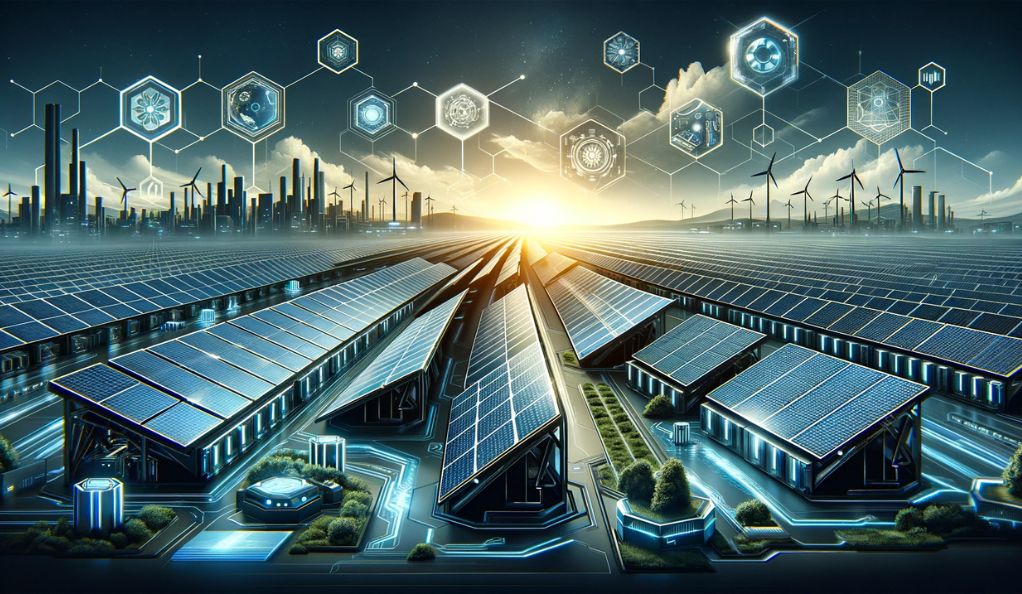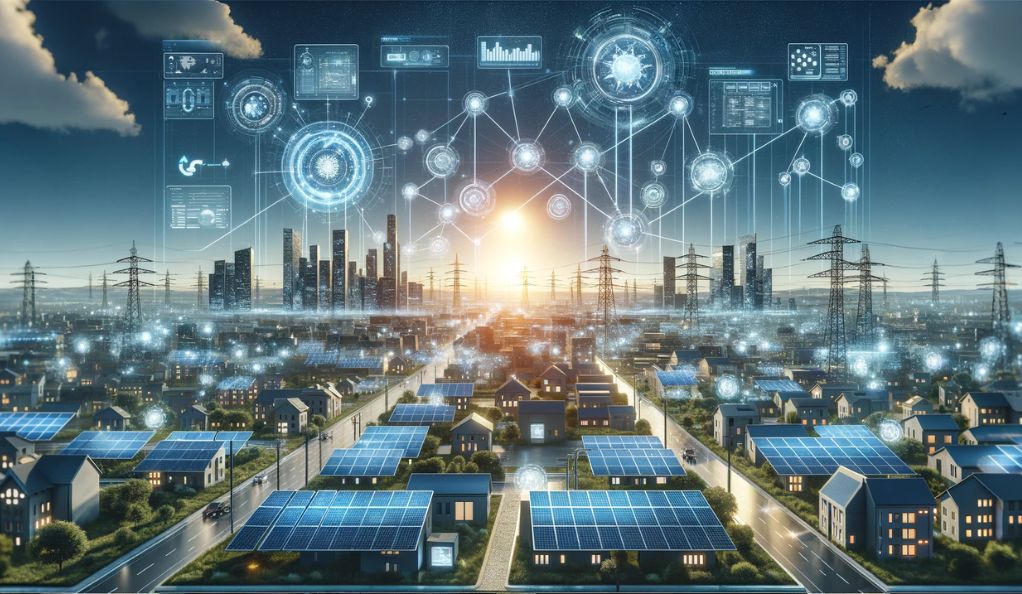Introduction
Solar energy has emerged as a cornerstone of the global transition towards sustainable and renewable energy sources. As the world grapples with the urgent need to reduce carbon emissions and combat climate change, the efficiency of solar panels has become a crucial focal point in the quest for cleaner and more accessible power generation. This article explores the cutting-edge advancements in solar panel efficiency, shedding light on the innovations that are propelling us closer to a greener and more sustainable energy future.
Solar panels, also known as photovoltaic panels, are devices that convert sunlight into electricity by utilizing the photovoltaic effect. When sunlight strikes the surface of these panels, it excites electrons in the semiconductor material, generating an electric current. The efficiency of this conversion process is vital because it directly impacts the amount of electricity produced relative to the incident sunlight. In other words, higher efficiency means more electricity is generated from the same amount of sunlight.
Understanding Solar Panel Efficiency
Before delving into the latest advancements, it’s essential to grasp the concept of solar panel efficiency and its significance. Solar panel efficiency is typically expressed as a percentage and measures how effectively a panel converts sunlight into electricity. It represents the ratio of electrical output to the solar energy input received by the panel. For example, if a solar panel has an efficiency of 20%, it converts 20% of the incoming sunlight into usable electricity.
Efficiency matters for several reasons:
- Maximizing Energy Production: Higher efficiency panels generate more electricity for a given area, which is particularly crucial for installations with limited space.
- Reducing Costs: Improved efficiency can lead to a lower overall cost per unit of electricity generated since fewer panels are needed to achieve the same output.
- Environmental Impact: Greater efficiency means less land and materials are required for solar farms, reducing their environmental footprint.
- Energy Accessibility: Higher efficiency panels make solar energy more accessible in regions with limited sunlight, increasing the potential for global adoption.
Efficiency improvements in solar panels have a direct impact on the affordability and feasibility of solar energy projects, making them more attractive to both residential and commercial consumers. Over the years, researchers and engineers have tirelessly worked to enhance the efficiency of solar panels, resulting in remarkable progress that we will explore in detail in the following sections.
Historical Perspective

To fully appreciate the advancements in solar panel efficiency, it’s essential to examine the historical context of solar photovoltaic technology. The journey from the earliest solar cells to the cutting-edge panels of today has been marked by remarkable progress and innovation.
Early Beginnings
The roots of solar energy can be traced back to the mid-19th century when French physicist Alexandre-Edmond Becquerel first discovered the photovoltaic effect in 1839. However, it wasn’t until 1883 that Charles Fritts, an American inventor, created the first genuine solar cell using selenium. These early cells had a paltry efficiency of just 1% and were primarily used for scientific experiments.
Silicon Solar Cells
The real breakthrough came in the 1950s when Bell Labs introduced the first practical solar cell made of silicon. With an efficiency of around 6%, these cells were more promising than their predecessors and found initial applications in powering telecommunication equipment and remote instrumentation.
The Space Age
The 1960s marked a significant milestone in solar panel technology as these panels were adopted for use in space exploration. The Vanguard 1 satellite, launched by the United States in 1958, was one of the first spacecraft to be powered by solar panels. This era saw the efficiency of solar panels rise to approximately 10%.
OPEC Oil Crisis
The oil crisis of the 1970s prompted renewed interest in solar energy as a viable alternative to fossil fuels. Research and development efforts intensified, leading to more efficient solar cells. By the end of the decade, solar panels were achieving efficiencies of around 14%.
The 21st Century Advancements
The early 2000s witnessed a surge in solar panel efficiency due to significant research and technological advancements. Breakthroughs like multi-junction solar cells, anti-reflective coatings, and improved manufacturing techniques propelled efficiencies beyond 20%. This marked a turning point for the solar industry, making solar power more competitive with traditional energy sources.
Recent Achievements
In recent years, the pursuit of higher efficiency has resulted in several breakthroughs. Notably, perovskite solar cells have garnered attention for their potential to achieve efficiencies exceeding 25%. These cells, made from a class of materials called perovskites, have shown rapid progress and hold the promise of further reducing the cost of solar energy production.
Cutting-Edge Materials
Advancements in solar panel efficiency are closely tied to the development and implementation of cutting-edge materials. These materials have the potential to revolutionize the way we harness energy from the sun, making solar power not only more efficient but also more affordable and accessible.
Perovskite Solar Cells
Perovskite solar cells have emerged as a game-changer. These cells, made from perovskite materials, boast remarkable efficiency gains, exceeding 25%. What’s more, they offer cost-effective manufacturing options, potentially driving down solar energy costs.
Tandem Solar Cells
Tandem solar cells, constructed by stacking multiple material layers, have shattered efficiency barriers. Some prototypes have surpassed 30%, pushing beyond the theoretical limits of single-layer cells.
Other Innovations
In addition to perovskite and tandem cells, other innovative materials are in the spotlight:
- Organic Photovoltaics (OPVs): Lightweight and flexible, OPVs promise cost-effective solar panels.
- Quantum Dots: Nano-semiconductors tuned for specific light wavelengths, aiming to boost efficiency.
- CIGS (Copper Indium Gallium Selenide): Thin-film technology offering high efficiency and flexibility.
- Transparent Conductive Oxides (TCOs): Materials for transparent solar panels integrated into buildings.
These materials enhance solar panel efficiency while reducing costs, making clean energy more accessible. With ongoing research, the future holds even greater promise for efficient and sustainable solar energy.
Innovative Designs

Advancements in solar panel efficiency aren’t limited to materials alone. Innovative designs have played a pivotal role in maximizing the energy output of solar panels. Here, we explore some of the cutting-edge designs reshaping the solar energy landscape.
Bifacial Solar Panels
Bifacial solar panels have gained popularity for their ability to capture sunlight from both sides of the panel. While traditional solar panels collect sunlight only from the front, bifacial panels utilize reflective surfaces to capture sunlight from the rear as well. This innovative design increases energy yield by up to 10-30% depending on the installation setup and surroundings.
Bifacial panels are especially effective in locations with reflective surfaces like snow, water, or light-colored ground cover. They are becoming increasingly common in commercial and utility-scale solar projects, offering enhanced efficiency without a significant increase in production costs.
Transparent Solar Panels
Transparent solar panels represent a revolutionary design that integrates seamlessly into various applications, from windows to building facades. These panels use transparent conductive materials that allow visible light to pass through while capturing the sun’s energy in the infrared spectrum.
While the efficiency of transparent solar panels is lower compared to traditional opaque panels, their potential to generate electricity without compromising aesthetics holds great promise. Imagine skyscrapers covered in transparent solar glass or vehicles with integrated solar windows contributing to their power needs.
Solar Panel Tracking Systems
To maximize efficiency throughout the day, solar panel tracking systems have been developed. These systems adjust the orientation of solar panels to follow the sun’s path across the sky. There are two main types:
- Single-Axis Tracking: Panels move on a single axis, typically from east to west, to follow the sun’s daily arc. This can increase energy production by 20-25%.
- Dual-Axis Tracking: Panels move on both horizontal and vertical axes, optimizing solar panel orientation throughout the day. Dual-axis tracking can boost efficiency by up to 40%.
Solar tracking systems are commonly used in large-scale solar installations, such as solar farms, to make the most of available sunlight.
Flexible and Thin-Film Solar Panels
Traditional rigid solar panels are being challenged by flexible and thin-film solar technologies. These designs are lightweight and can be integrated into various surfaces, making them suitable for unconventional applications.
Flexible solar panels can conform to curved surfaces and are ideal for applications like solar backpacks, tents, and clothing with embedded solar cells. Thin-film solar panels are lighter and more adaptable to various materials, offering innovative possibilities for solar integration in architecture and consumer products.
Energy Storage Solutions
Efficient energy production is only one part of the equation for a sustainable energy future. To ensure reliable power availability, especially during periods of low sunlight, the integration of energy storage solutions with solar panels has become a critical focus in the renewable energy sector.
The Need for Energy Storage
Solar energy is intermittent, dependent on weather conditions and daylight hours. This intermittency poses challenges for maintaining a consistent power supply, as excess energy generated during the day needs to be stored for use at night or during cloudy periods. Energy storage systems bridge this gap, ensuring a continuous and reliable energy supply.
Battery Technologies
Lithium-ion batteries have become the go-to choice for energy storage in solar systems. These batteries are known for their high energy density, efficiency, and reliability. They store excess energy generated by solar panels during sunny periods and discharge it when needed. Lithium-ion batteries have seen significant advancements in recent years, leading to improved efficiency and longer lifespans.
Beyond lithium-ion, emerging battery technologies such as solid-state batteries and flow batteries hold promise for even greater energy storage capacity and efficiency. These innovations are essential for expanding the capabilities of solar energy systems and reducing reliance on conventional power sources.
Grid Integration
The integration of solar panels with the electrical grid is another critical aspect of energy storage. Smart grid technologies enable two-way communication between solar installations and the grid, allowing surplus energy to be fed back into the grid when it’s not immediately needed. This process, known as net metering, ensures that excess energy generated during sunny days is not wasted and can be used to offset energy consumption at other times.
Power Inverters
Efficient energy conversion is also crucial in solar panel systems. Power inverters are essential components that convert direct current (DC) electricity generated by solar panels into alternating current (AC) electricity suitable for household and grid use. Innovations in power inverter technology have improved efficiency, reducing energy losses during the conversion process.
Integration with Smart Grids

The integration of solar panels with smart grids represents a pivotal advancement in the realm of renewable energy. Smart grids are modernized electrical grids that incorporate digital technology to efficiently manage electricity generation, distribution, and consumption. When combined with solar panel systems, smart grids offer several benefits that contribute to a more reliable and sustainable energy ecosystem.
Real-Time Monitoring and Control
Smart grids enable real-time monitoring and control of electricity flow. When solar panels are integrated into a smart grid, data on energy generation, consumption, and grid conditions can be collected and analyzed instantaneously. This data allows for better grid management, ensuring that surplus solar energy is efficiently distributed or stored.
Demand Response Programs
One of the significant advantages of integrating solar panels with smart grids is the ability to participate in demand response programs. During periods of high electricity demand, utility companies can request that solar panel owners temporarily increase their energy production. In return, participants receive financial incentives or reduced electricity rates. This not only benefits the grid by reducing strain during peak hours but also offers cost savings for solar panel owners.
Grid Stability and Reliability
Solar panels can sometimes generate excess energy, especially during sunny days. Smart grids provide a mechanism for efficiently redirecting this surplus energy to areas experiencing higher demand or storing it for later use. This grid flexibility enhances stability and reliability, reducing the risk of blackouts or brownouts.
Distributed Energy Resources
Integrating solar panels with smart grids transforms individual solar installations into distributed energy resources (DERs). DERs contribute to grid resilience by decentralizing power generation. In the event of a grid failure, DERs can continue to provide electricity to homes and businesses, improving energy security.
Enhanced Energy Management
Smart grids offer consumers the ability to manage their energy usage more effectively. Homeowners with solar panels can monitor their energy production and consumption in real time, enabling informed decisions on when to use stored energy, sell excess energy to the grid, or optimize energy-intensive activities.
Reduced Environmental Impact
By promoting efficient energy use and integration of renewable sources like solar, smart grids play a crucial role in reducing carbon emissions and mitigating the environmental impact of energy production.
Environmental Benefits
The advancements in solar panel efficiency are not only transforming the energy landscape but also offering substantial environmental benefits. As the world grapples with the urgent need to address climate change and reduce greenhouse gas emissions, solar panels are emerging as a crucial ally in the fight against environmental degradation.
Reduced Carbon Emissions
One of the most significant environmental advantages of highly efficient solar panels is their ability to reduce carbon emissions. Solar energy is a clean and renewable source of power, generating electricity without emitting harmful greenhouse gases such as carbon dioxide (CO2). By replacing fossil fuel-based energy sources with solar power, we can significantly mitigate the environmental impact of electricity generation.
Conservation of Natural Resources
Efficient solar panels require fewer materials to produce the same amount of electricity. Traditional fossil fuel-based power generation relies on the extraction and burning of finite resources like coal, oil, and natural gas. Solar panels, on the other hand, use abundant sunlight as their source of energy. By reducing our reliance on fossil fuels, we can preserve natural resources and protect fragile ecosystems.
Reduced Air and Water Pollution
The combustion of fossil fuels not only releases CO2 but also produces harmful air pollutants and contributes to water pollution. These pollutants have far-reaching consequences for human health and the environment. Solar panels, with their clean and emissions-free operation, help mitigate these negative impacts by reducing the demand for polluting energy sources.
Land Use Efficiency
Highly efficient solar panels make better use of available land. This is particularly important for utility-scale solar farms, where maximizing energy production while minimizing land use is essential. By generating more electricity per square meter, efficient solar panels reduce the environmental footprint of solar installations, preserving natural habitats and agricultural land.
Energy Independence
Transitioning to solar energy also enhances energy independence. By generating electricity locally from sunlight, communities and nations can reduce their reliance on imported fossil fuels, thereby strengthening energy security and reducing vulnerability to energy supply disruptions.
Mitigation of Urban Heat Islands
Urban areas with a high concentration of buildings and pavement often experience elevated temperatures, known as urban heat islands. Solar panels, especially when integrated into buildings, can provide shade and reduce the absorption of heat by urban surfaces. This, in turn, helps mitigate the urban heat island effect, creating more comfortable and sustainable cities.
Conclusion
The advancements in solar panel efficiency represent a transformative shift towards cleaner and more sustainable energy generation. From historical breakthroughs to cutting-edge materials and innovative designs, solar panels have come a long way. These efficiency gains not only increase electricity generation from sunlight but also reduce costs, democratizing access to renewable energy.
Efficient solar panels contribute significantly by reducing carbon emissions and conserving natural resources. They enhance grid reliability, stimulate economic growth through job creation, and foster energy independence. Moreover, these advancements drive broader technological innovation and offer appealing investment opportunities.
